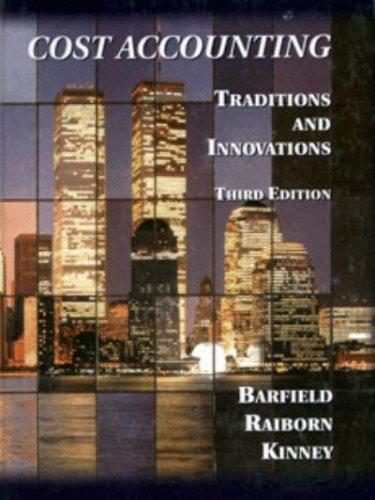In 1982, Ford Motor Company officials went to the test track to evaluate a prototype of their
Question:
In 1982, Ford Motor Company officials went to the test track to evaluate a prototype of their new Bronco II, a sports utility vehicle. One of the officials was the head of automotive safety, another was his superior. These two officials, along with Ford’s top lawyer, witnessed something that surely sent shivers up their spines—while rounding a corner, a front wheel of the Bronco II lifted off the ground; a clear indication of its instability.
The Ford Bronco II went into production in January 1983. As of early 1993, 260 people have died in Bronco IIs in accidents involving the vehicle flipping over. Also, more than 100 lawsuits relating to the Bronco II have been settled by Ford. Ford settled all but two of these lawsuits out of court. Of the two that went to court, Ford won one and lost one. Court testimony in the cases that went to trial revealed the following facts: 1. Ford knew in 1981 that it could make the vehicle considerably more stable by switching to a wider chassis, but it didn’t do so because that would have cost valuable time in getting the product to market; it was in a race with GM and GM’s S-10 Blazer to get to market. 2. Ford’s safety changes following the test track incident were largely superficial. 3. Ford’s tests after the Bronco II was available to the market continued to indicate that the vehicle was prone to tip or roll over on sharp turns. 4. More that 50 safety-related documents regarding early rollover tests and sug¬ gestions for design improvements were inadvertently destroyed by Ford.
[SOURCE: Adapted from Milo Geyelin and Neal Templin, “Ford Attorneys Played Unusually Large Role in Bronco IPs Launch,” Wall Street Journal (January 5, 1993), pp. Al, A6. Reprinted by permission of The Wall Street Journal © 1993 Dow Jones & Company, Inc. All Rights Reserved Worldwide.]
a. Discuss whether it was ethical of Ford Motor Company to bring the Bronco II to market, given the company’s knowledge about the vehicle’s safety problems.
b. In making the decision to bring the vehicle to market in 1983, rather than make safety design changes and bring it to market later, what relevant costs did Ford possibly overlook?
c. What action could the head of automotive safety at Ford have taken to induce Ford to revise the design of the Bronco II before bringing it to market?
LO1
Step by Step Answer:

Cost Accounting Traditions And Innovations
ISBN: 9780538880473
3rd Edition
Authors: Jesse T. Barfield, Cecily A. Raiborn, Michael R. Kinney





